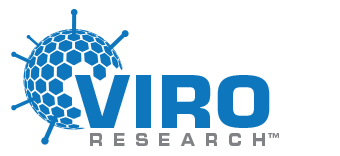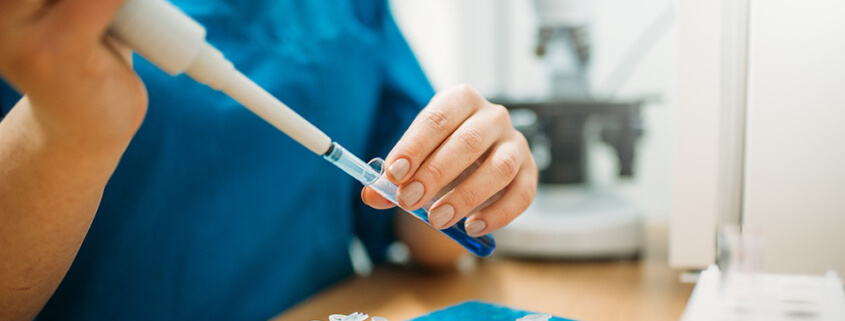INTRODUCTION:
Lateral flow assays (LFAs) are a widely used diagnostic tool for point-of-care diagnostics. LFAs require optimization of the component assembly, sample pad, conjugate pad, nitrocellulose membrane (NCM), and absorbent pad on the plastic backing in preparation for a specific assay.
DISCUSSION:
Components to be optimized include analytical membranes (typically NCM), conjugate and sample pads, target analyte (e.g., recombinant protein), antibodies such as goat anti-human IgG if clinical human sera is being used to recognize the target analyte, blocking reagents/buffers, and the design of delivery geometry. Hsieh, Dantzler, and Weigl (2017) presented a helpful flow chart for the optimization procedures for LFAs1Hsieh, H. V., Dantzler, J. L., & Weigl, B. H. (2017). Analytical tools to improve optimization proce-dures for lateral flow assays. Diagnostics, 7(2), 29. https://doi.org/10.3390/diagnostics7020029. Once you set the goals for the assay, as outlined in Figure 2 of their paper, you will prepare three components for the LFA.
The first component is to capture the antibody test line and strip onto the NCM. Next, the detector antibody, such as a goat anti-human IgG Ab, is attached to a nanoparticle (NP), like gold, which generates the test signal. The last component is a running buffer (RB) that allows for the flow of the detector antibody-NP through the NCM. Multiple types of NCM (pore size, for instance) and various preparations of the Ab-NP and RB require titration to identify the best initial conditions. You must re-evaluate the Ab-NP concentrations If there is significant nonspecific binding (NSB), blocking reagents, or a revision of the analyte and or detection. For instance, Kim et al. (2016) showed to detect hepatitis B surface antigens, gold nanoparticles (GNP) 42nm in size showed superior performance in detecting the hepatitis B antigen2Kim, D., Kim, Y., Hong, S., Kim, J., Heo, N., Lee, M. K., Lee, S., Kim, B., Kim, I., Huh, Y., & Choi, B. (2016). Development of lateral flow assay based on sizecontrolled gold nanoparticles for detection of hepatitis B surface antigen. Sensors, 16(12), 2154. https://doi.org/10.3390/s16122154.
However, Zhan et al. (2017) indicated they could increase the sensitivity of their LFA 256-fold by using GNPs 100nm in size3Zhan, L., Guo, S. Z., Song, F., Gong, Y., Xu, F., Boulware, D. R., McAlpine, M. C., Chan, W. C., & Bischof, J. C. (2017). The role of nanoparticle design in determining analytical performance of lateral flow immunoassays. Nano letters, 17(12), 7207-7212. https://doi.org/10.1021/acs.nanolett.7b02302. Additional optimization can include the capture Ab striping conditions, such as the Ab concentration and buffer pH. Kim et al. (2016) used pH values of between 6-10 and Ab concentrations of 1-20 μg/ml and found optimum pH and concentrations were nine and 10μg/ml, respectively, with the 42nm GNP4Kim, D., Kim, Y., Hong, S., Kim, J., Heo, N., Lee, M. K., Lee, S., Kim, B., Kim, I., Huh, Y., & Choi, B. (2016). Development of lateral flow assay based on sizecontrolled gold nanoparticles for detection of hepatitis B surface antigen. Sensors, 16(12), 2154. https://doi.org/10.3390/s16122154. Analyte concentration on the test strip depends on the protein/detection Ab affinity. Kim et al. (2016) tested concentrations of between 1ng to 100μg, with between 1-10μg being optimum for their assay5Kim, D., Kim, Y., Hong, S., Kim, J., Heo, N., Lee, M. K., Lee, S., Kim, B., Kim, I., Huh, Y., & Choi, B. (2016). Development of lateral flow assay based on sizecontrolled gold nanoparticles for detection of hepatitis B surface antigen. Sensors, 16(12), 2154. https://doi.org/10.3390/s16122154.
CONCLUSION:
Determining necessary protocol parameters, assembly, and pretreatment is essential for any new LFA. As Borse and Srivastava (2019) point out, overlapping the sample pad and conjugate pad is vital for proper wicking6Borse, V., & Srivastava, R. (2019). Process parameter optimization for lateral flow immunosens-ing. Materials Science for Energy Technologies, 2(3), 434-441. https://doi.org/10.1016/j.mset.2019.04.003. The conjugate pad material needs to pull and hold the fluid better than the material used for the sample pad. The conjugate pad improves the fluid flow and its movement from the sample pad to NCM. Some LFA assays require special pretreatment for the strip, such as buffer cure or the use of a blocking agent. Borse and Srivastava (2019) noted heat treatment (55ºC for 20 min) removed residual moisture present on the NCM and facilitated the fluid flow7Borse, V., & Srivastava, R. (2019). Process parameter optimization for lateral flow immunosens-ing. Materials Science for Energy Technologies, 2(3), 434-441. https://doi.org/10.1016/j.mset.2019.04.003. They also found that the minimal concentration of capture antibodies was 1.2μg/ml for the appearance of the control line8Borse, V., & Srivastava, R. (2019). Process parameter optimization for lateral flow immunosens-ing. Materials Science for Energy Technologies, 2(3), 434-441. https://doi.org/10.1016/j.mset.2019.04.003. Finally, as shown in these references, each assay is unique and requires optimization in order to find the correct concentrations for the analyte and detection antibodies.



